India. Geographic Location
The geographic location is South Asia. India is regarded to be the seventh-largest country by geographical area, the second-most populous country. It is surrounded by the Indian Ocean on the south, the Arabian Sea on the west as well as the Bay of Bengal on the east. The total length of the coastline is 7,517 kilometres. Its neighbors are Pakistan to the west; People’s Republic of China, Nepal, and Bhutan to the north; and Bangladesh and Myanmar to the east. India is in the vicinity of Sri Lanka, the Maldives, and Indonesia in the Indian Ocean.
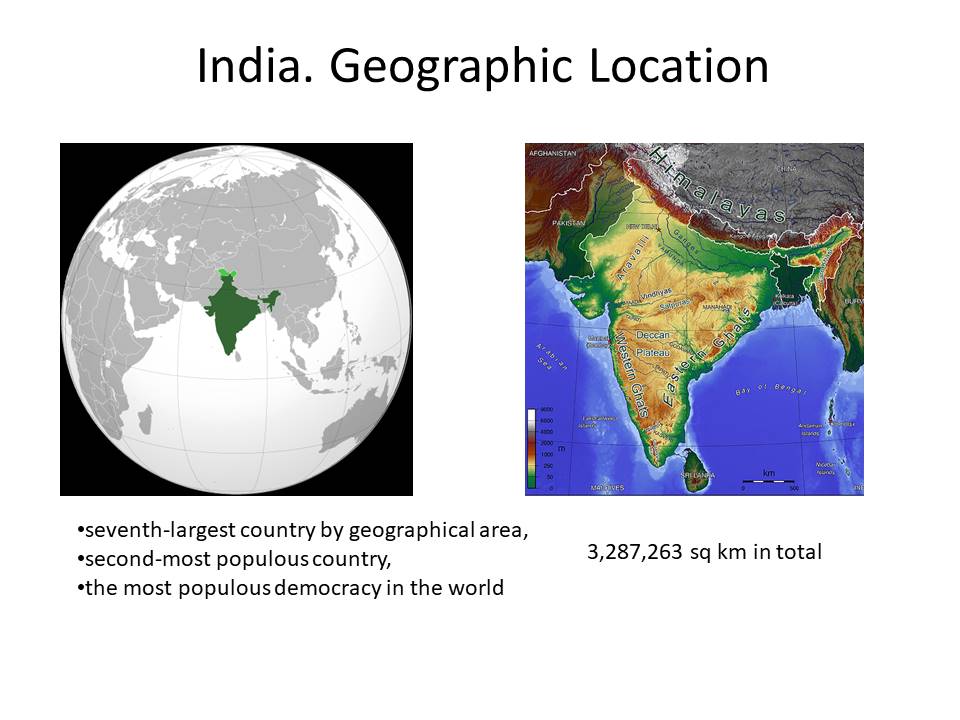
Climate
The climate varies from tropical monsoon in southern part of the country to temperate in northern part of the country.
The climate of India comprises a wide range of weather conditions across a large geographic scale and varied topography. In accordance with the Köppen system, India hosts six major climatic subtypes, ranging from desert in the west, to alpine tundra and glaciers in the north, to humid tropical regions supporting rainforests in the southwest and the island territories. Many regions have starkly different microclimates. The nation has four seasons: winter (January and February), summer (March to May), a monsoon (rainy) season (June to September), and a post-monsoon period (October to December).
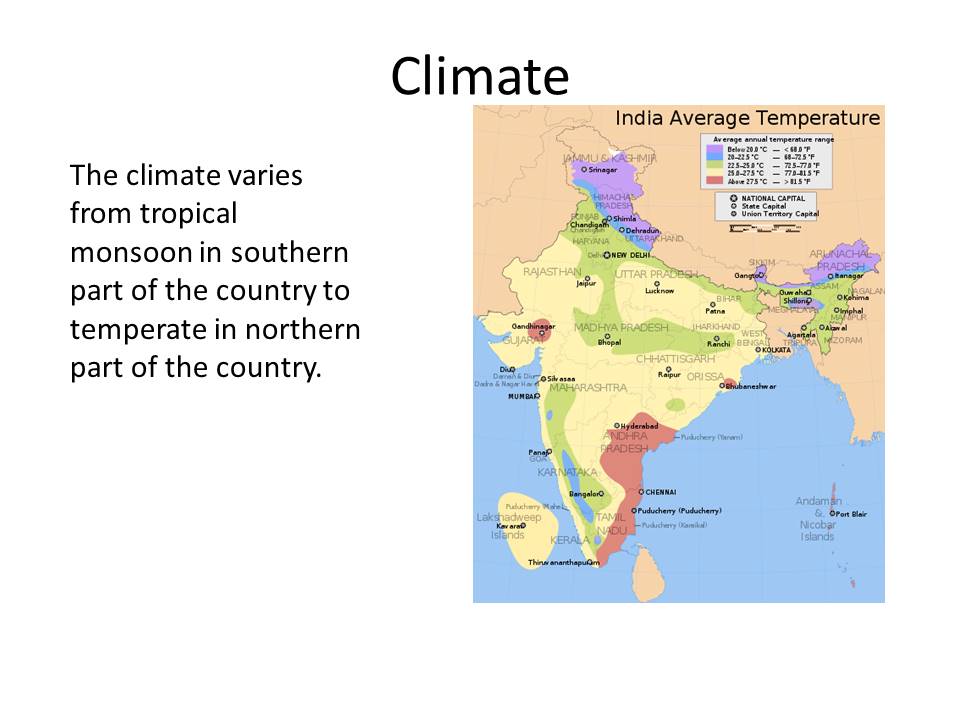
Terrain
The terrain varies from upland plain in the south, on the eastern part is plain land, on the western part is a desert and on north, mountainous region.
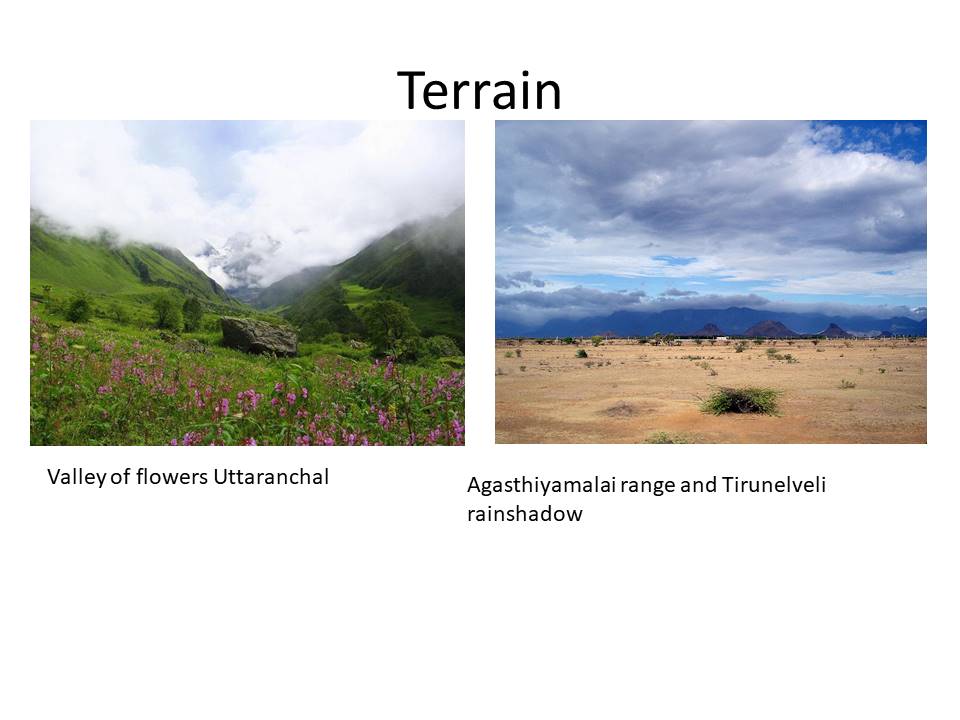
Capital
The capital of the country is New Delhi located on the northern part of the country. It is a cosmopolitan city due to the multi-ethnic and multi-cultural presence of the vast Indian bureaucracy and political system. The city’s capital status has amplified the importance of national events and holidays. National events such as Republic Day, Independence Day and Gandhi’s birthday are celebrated with great enthusiasm in New Delhi and the rest of India. On India’s Independence Day (15 August) the Prime Minister of India addresses the nation from the Red Fort. It is regarded to be the cultural, and consequently political center of the country with lots of places of interest for tourists and the majority of the governmental bodies.
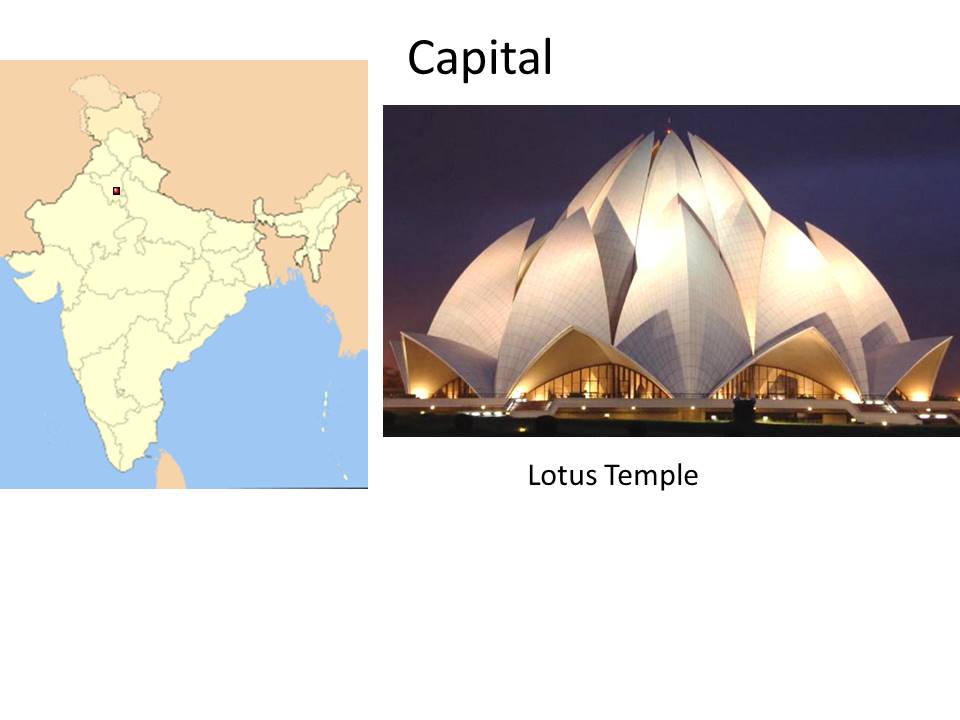
Type of Government
Federal type of government. India is a republic consisting of 28 states and seven union territories with a parliamentary system of democracy. India has a bicameral parliament operating under a Westminster-style parliamentary system.
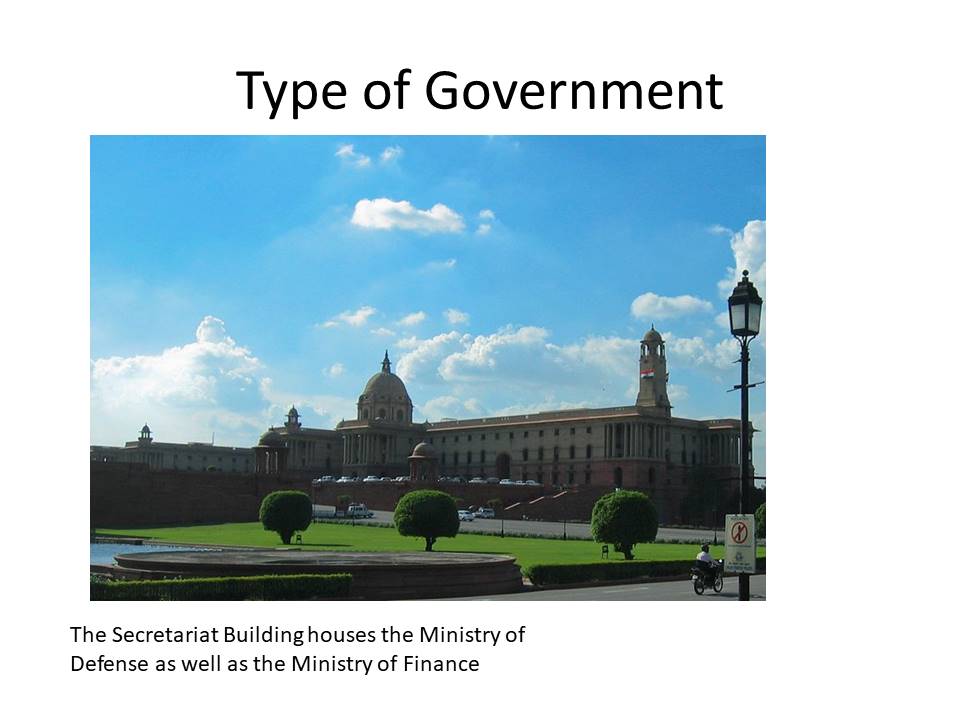
Population. National Sports
- 1.2 billion population.
- Second Most Populated Country.
- Rapid Increase of population within the last 50 years due to the development of medicine and agricultural productivity.
With the population of 1.2 billion, India is the world’s second most populous country. The last 50 years have seen a rapid increase in population due to medical advances and massive increase in agricultural productivity made by the green revolution.
Sports
India’s official national sport is field hockey, administered by the Indian Hockey Federation. Traditional sports include kabaddi, kho kho, and gilli-danda, which are played nationwide. India is also home to the ancient martial arts, Kalarippayattu and Varma Kalai.
Kabaddi (sometimes written Kabbadi or Kabadi) is a team sport that originated in South Asia. Two teams occupy opposite halves of a field and take turns sending a “raider” into the other half, in order to win points by tagging or wrestling members of the opposing team; the raider then tries to return to his own half, holding his breath during the whole raid.
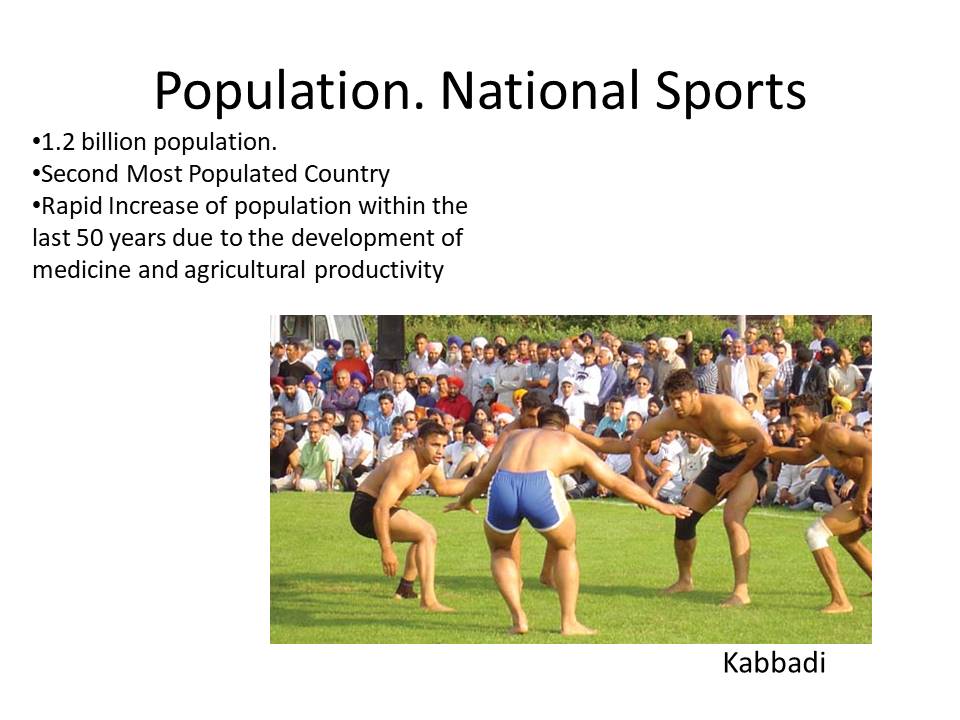
Education
Education in India has a history stretching back to the ancient urban centres of learning at Taxila and Nalanda. Western education became ingrained into Indian society with the establishment of the British Raj. Education in India is under the control of both the Union Government and the states, with some responsibilities lying with the Union and the states having autonomy for others. The various articles of the Indian constitution provide for education as a fundamental right. Most universities in India are Union or State Government controlled. The best technical colleges in India are the five IITs, IIMs, AIIMS, Delhi, AFMC, Pune, JNU, etc.
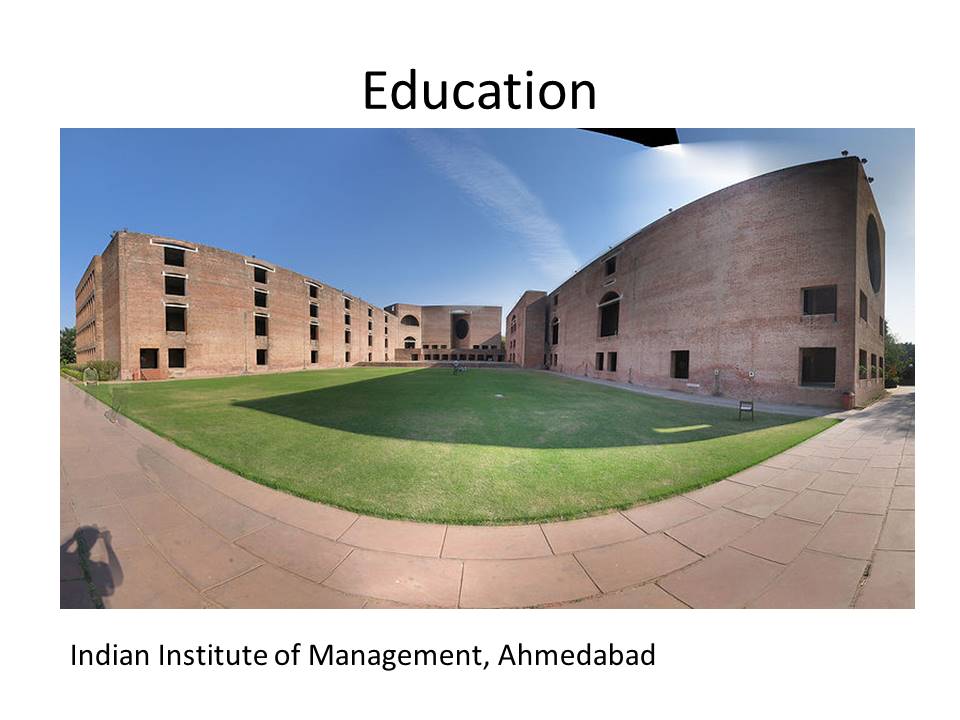
Industry. Military sphere
The industry scenario in India saw a rapid increase in the various sectors. But the striking factor was observed in the IT Industry sector. The Indian software industry has grown at a massive rate from a mere US $ 150 million in 1991-92 to a staggering US $ 5.7 billion (including over $4 billion worth of software exports) in 1999-2000. No other Indian industry has performed this well against the global competition. The IT sector has helped the India Industry to develop in leaps and bounds.
Indian handicrafts have withstood competition from machines over the years. The skills are passed on from one generation to the next. The handicraft and handloom sector is a major source of rural employment and earns substantial foreign exchange. Traditional textiles are as popular abroad as they are within the country. The major export items include hand-knotted carpets, art metalware, hand-printed textiles and leather, wood and cane wares. The military branches of the country are Army, Navy, Air Force, and Coast Guard.
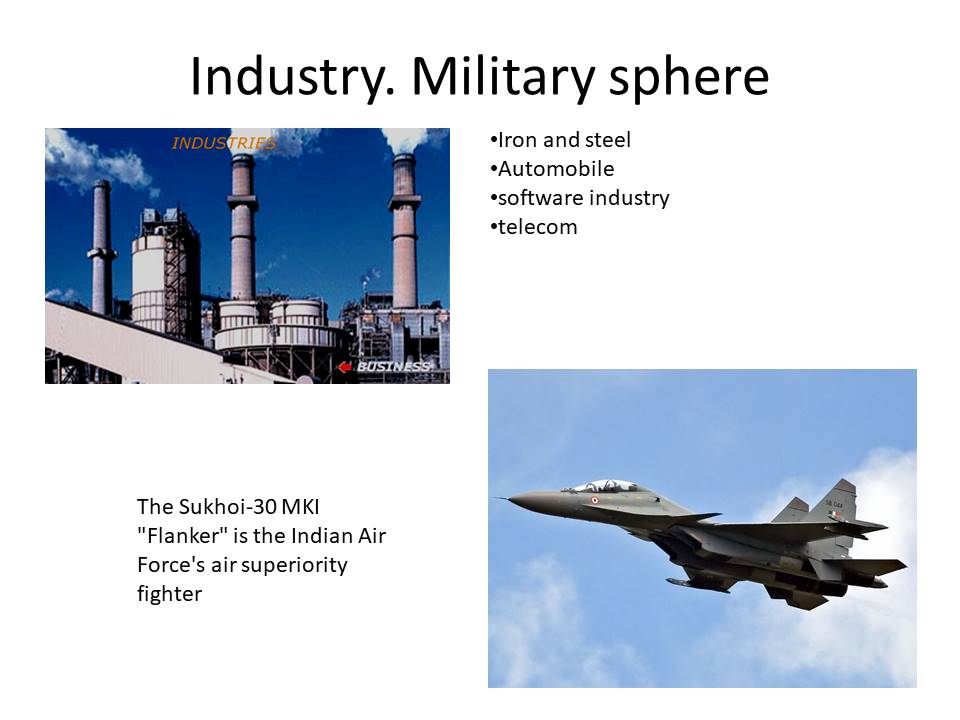
Economy. Life Expectancy
The economy of India is the twelfth largest economy in the world by market exchange rates and the fourth largest by purchasing power parity. In the 1990s, following economic reform from the socialist-inspired economy of post-independence India, the country began to experience rapid economic growth, as markets opened for international competition and investment. In the 21st century, India is an emerging economic power with vast human and natural resources, and a huge knowledge base.
Life expectancy
The life expectancy of the whole population is 69.89 years.
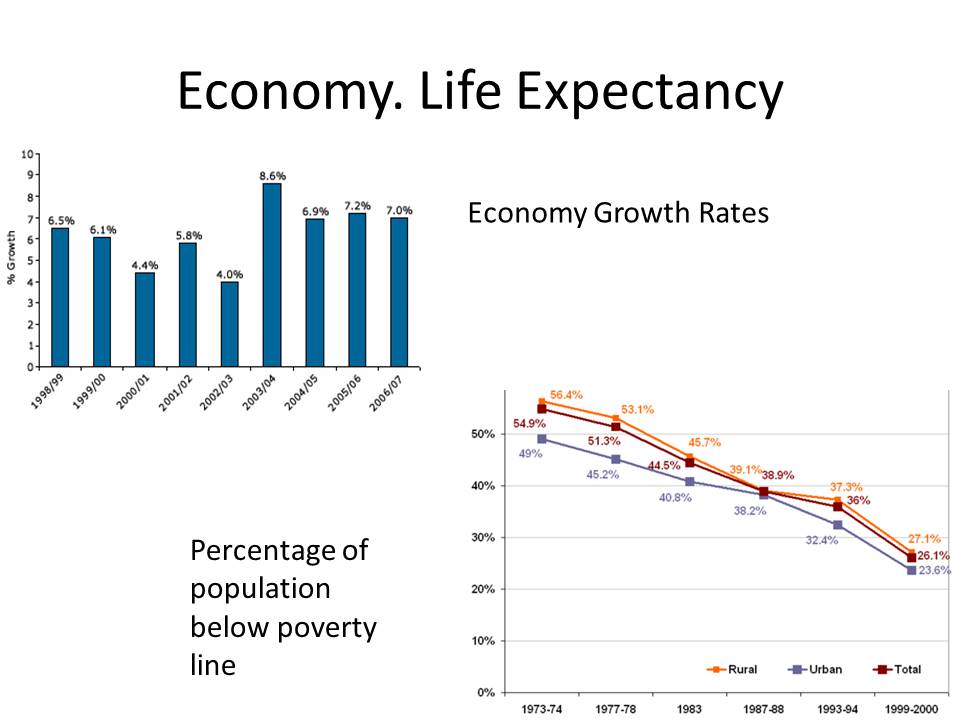
National Holydays. Tourism. Food
The main tourist attractions of the country are for its natural beauty – Himalayas in the north, desert of Rajasthan and the beaches of Goa.
Tourism in India has received a major boost in the past decade since the Indian Government realized the great potential of tourism of India during vacations. Tourism of India during vacations has grown rapidly with a great influx of tourists from throughout the world who have been irresistibly attractive to the travelers.
Food
Indian cuisine is characterized by a wide variety of regional styles and sophisticated use of herbs and spices. The staple foods in the region are rice (especially in the south and the east) and wheat (predominantly in the north). Spices like black pepper that are now consumed world wide are originally native to the Indian subcontinent. Chili pepper, which was introduced by the Portuguese is also very much used within Indian Cuisine.
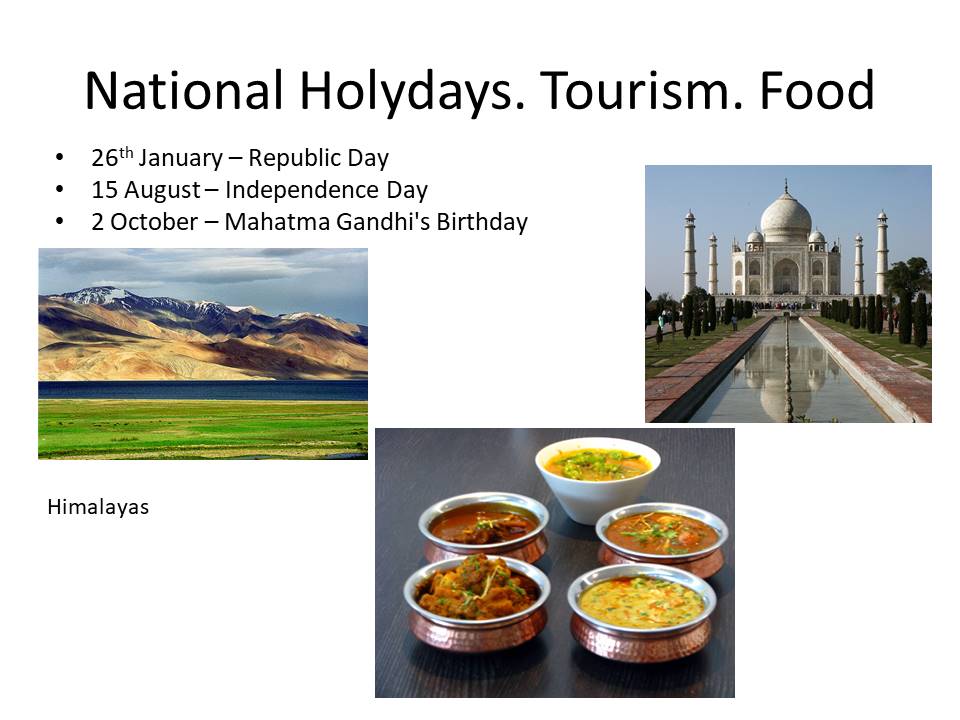
Language. Religion. Flag. Currency
India is one of the most religiously diverse nations in the world, with some of the most deeply religious societies and cultures. Religion still plays a central and definitive role in the life of most of its people.
India is the birth place of Dharmic religions such as Hinduism, Buddhism, Jainism and Sikhism. Dharmic religions, also known as Indian religions, is a major form of world religions next to the Abrahamic ones. Today, Hinduism and Buddhism are the world’s third- and fourth-largest religions respectively, with around 1.4 billion followers altogether.
Currency
Indian National Rupee.
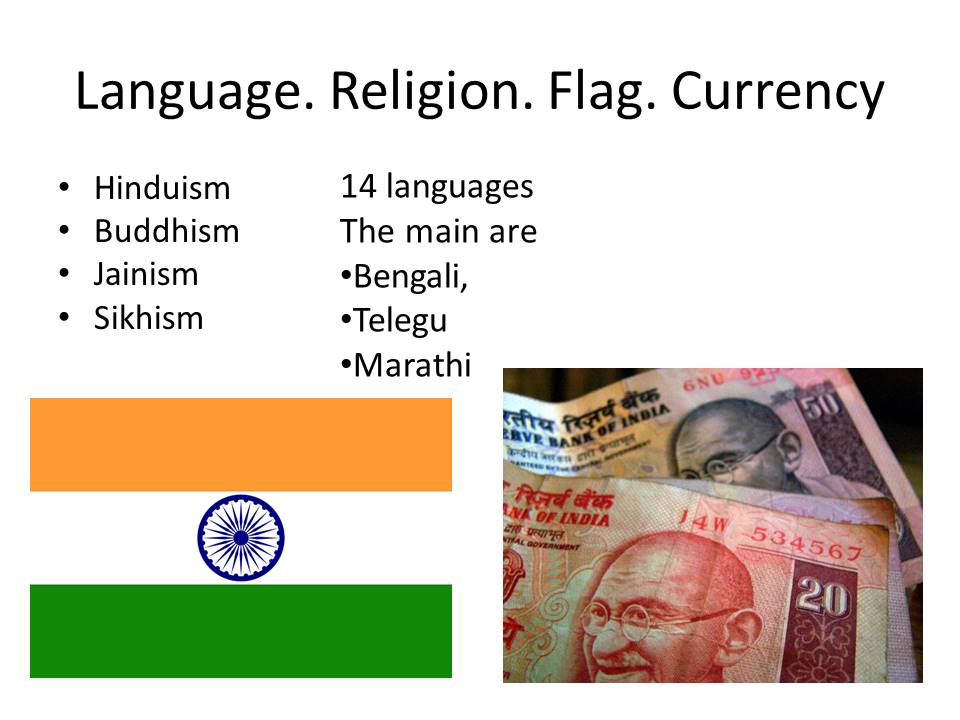
Transportation. Hotels. American Embassy. Current Events
Transportation
Transportation is available via road, railways, airplane, and water.
Hotels
India is the country of the extensive touristic opportunities. Independently on the preferences and personal tastes, the place to stay may be found even for the most demanding tourists. Originally, the hotels are located in the epicenters of the places of tourists’ interests.
Important social/behavioral customs
The best solution is to stay cool, never mind the surrounding people and stay thick skinned. Indians like asking lots of questions to tourists, and the task is to stay calm and passionate.
Traditional Indian Greeting may be regarded as a respect, nevertheless only if a tourist knows all the details of such Namaste greeting. Otherwise, the best choice will be the gentle handshake.
The toilet paper problem is generally regarded to be the common problem, nevertheless, the tourist zones are almost free of it.
Avoid detailed and discreditable photos.
Event
- January 14 ‑ Pongal/Tamil New Year’s Day (not for Karnataka)
- January 15 ‑ Thiruvalluvar Day
- January 26 ‑ Republic Day

Reference List
CIA. The World FactBook 6 October 2009. Web.
Embassy of the United States, India. 2009. Web.
India Education. 2009. Web.
Indian Industry. 2009. Web.
World Bank. India Country Overview. 2009. Web.
World Travel Guide. 2009. Web.
Yatra. 2009. Web.